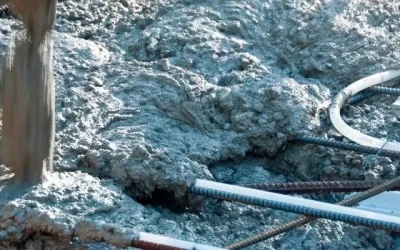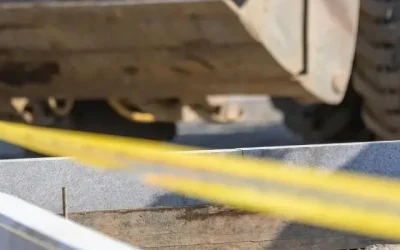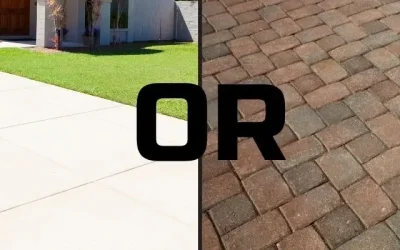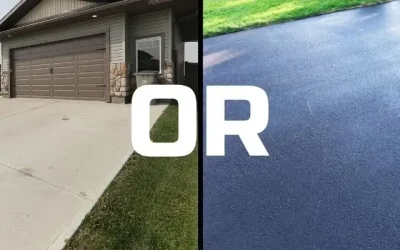Thinking of upgrading your driveway or patio but not sure which concrete finish to choose? The type of finish you go with affects more than just how the surface looks. It also influences safety, maintenance, cost, and how easily you can update it in the future. Whether you’re building from scratch or replacing old concrete, choosing the right finish helps you get the most out of the space now and in the future. In this post, we’ll break down the key differences between regular concrete and exposed aggregate, two of the most popular options in South East Queensland. You’ll learn how they compare in terms of appearance, price, durability, cleaning, and what might work best for your space.
What is Regular Concrete?
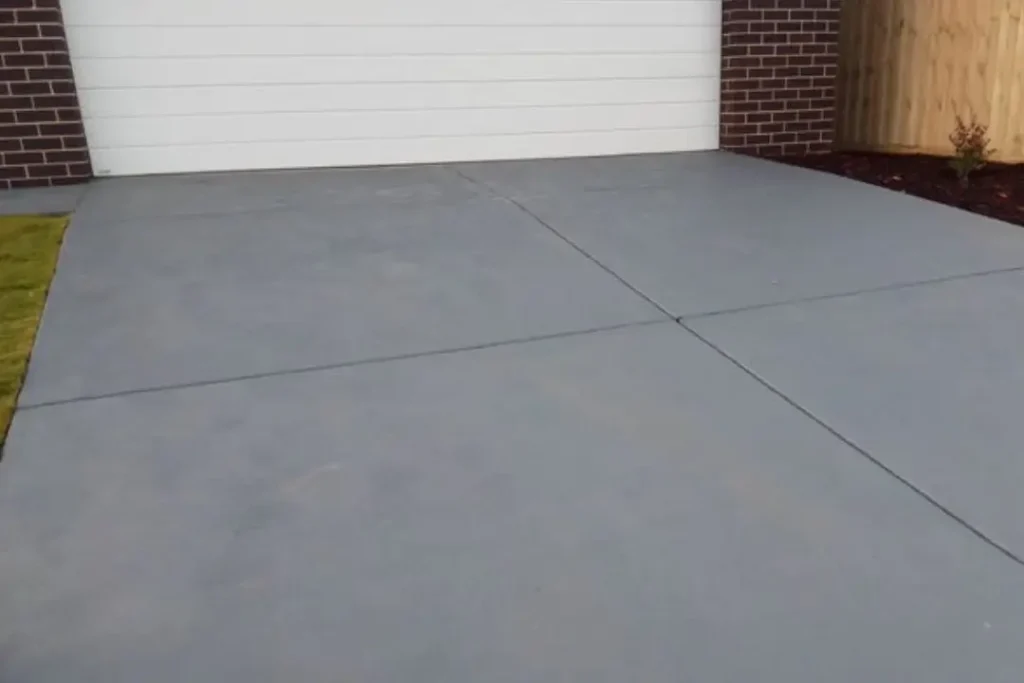
Regular concrete, also known as plain concrete, is the smooth grey surface most people picture when they think of a driveway or footpath. After it’s poured, the surface is levelled and finished for a clean, uniform look. It’s a practical choice for homeowners who want something simple, functional and budget-friendly.
One of the biggest advantages of regular concrete is its flexibility. If you decide to change the look later, it’s easy to paint, resurface, stencil, or even tile over it. While it doesn’t offer the decorative appeal of exposed aggregate, you can still customise it with a broom finish or colour tint to suit your space.
What is Exposed Aggregate?
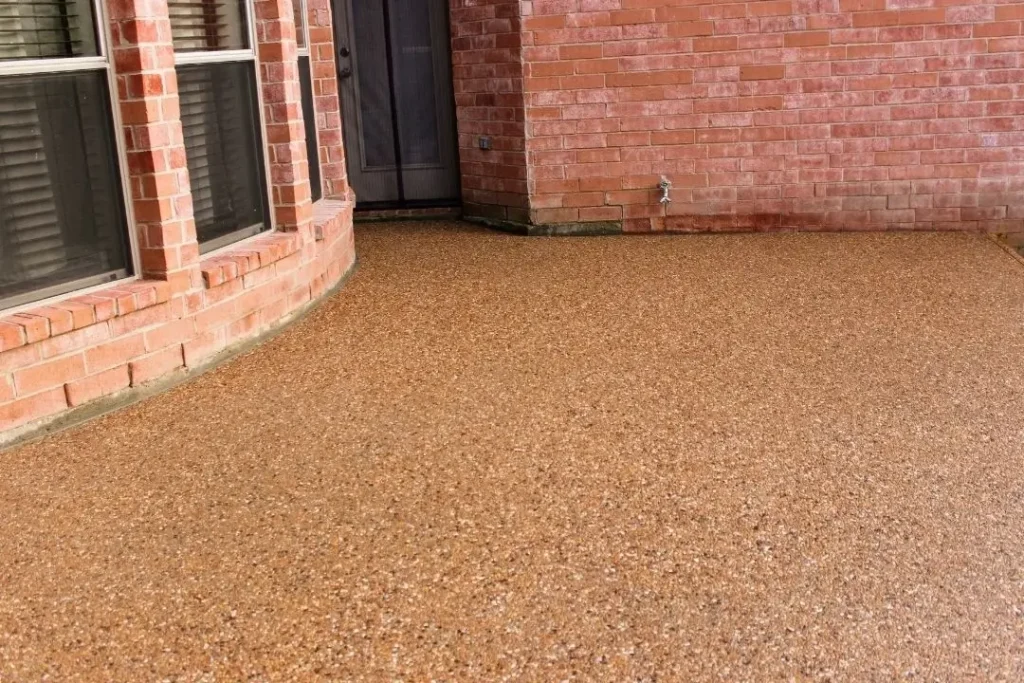
Exposed aggregate, sometimes called pebblecrete, is a decorative finish where the top layer of cement is washed away to reveal the stones and gravel mixed into the surface. This creates a textured, patterned look that adds visual interest and a more tactile feel underfoot.
It’s a popular option for driveways, garden paths, and pool surrounds because of its slip resistance. The coarse surface offers more grip than smooth concrete, making it a practical choice in wet or high-traffic areas. While it typically costs more than plain concrete, exposed aggregate is often chosen for its durability, texture, and premium finish.
Head-to-Head Comparison
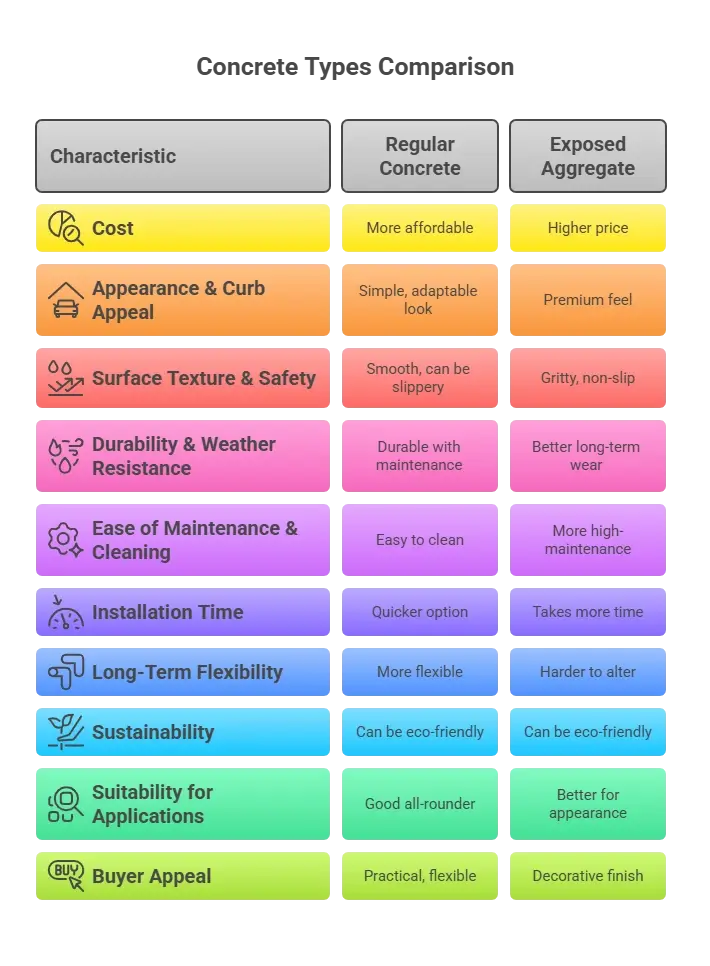
Cost
Regular concrete is the more affordable option, which makes it a popular choice for homeowners on a budget or covering large areas. In SEQ suburbs like Caboolture or Beerwah, prices typically range from $90 to $130 per square metre, depending on site access, prep work, and any added finishes like colouring or broom texturing. Its straightforward installation means lower labour costs and shorter time on site.
Exposed aggregate usually starts at $120 to $160 per square metre. The higher price reflects the extra materials, the timing and technique to expose the surface, and the sealing that’s usually recommended to protect the finish. It’s a more labour-intensive job and takes longer to complete, especially in humid or unpredictable weather.
While the upfront cost of exposed aggregate is higher, many homeowners see it as a worthwhile investment in presentation and long-term appeal, particularly in visible areas like driveways and front entries.
Appearance & Curb Appeal
Regular concrete has a clean and simple look that works well for driveways, patios, and walkways, especially when paired with modern or minimalist home designs. While it’s usually plain grey, you can customise it with coloured oxide, a broom finish, or a decorative sealer. It’s easier to paint or stencil later if you want to change things up.
On the other hand, exposed aggregate stands out from day one. The surface reveals a mix of stones and textures that catch the eye and add natural detail to your outdoor areas. Depending on the mix used, it can complement coastal, contemporary, or even rural-style homes. Because of its visual appeal, it’s a popular pick for front-facing spaces like driveways and entrance pathways where first impressions matter.
In terms of street appeal, exposed aggregate tends to create a more premium feel, while regular concrete is understated but adaptable. Both can work beautifully with the right landscaping, but if visual impact is a priority, exposed aggregate has the edge.
Surface Texture & Safety
Regular concrete has a relatively smooth surface once cured. While this creates a clean and uniform finish, it can become slippery when wet, especially if it’s polished or sealed without added grip. To improve traction, many homeowners choose a broom finish, which lightly textures the surface during installation. This simple treatment makes it more suitable for driveways, paths, and areas exposed to rain.
By contrast, exposed aggregate has a natural texture built into the surface. The exposed stones create a gritty, non-slip finish, making it ideal for wet zones and sloping surfaces. That’s why it’s often chosen for pool surrounds, outdoor steps, and steep driveways where extra grip is important for safety.
Surface grip can’t be overlooked, especially in SEQ, where heavy rains and storms are part of everyday life. If you’re thinking about high-traffic outdoor areas or anywhere that gets wet frequently, exposed aggregate offers better slip resistance without the need for extra treatments.
Durability & Weather Resistance
Regular concrete is highly durable when installed correctly and maintained over time. It can handle heavy foot traffic, parked vehicles, and general outdoor wear. However, the smooth surface may show cracks, tyre marks, or stains more easily, given its uniform appearance. Without a sealer, regular concrete is also more prone to moisture absorption and discolouration over time.
Exposed aggregate tends to perform better in terms of long-term surface wear. The textured finish is less likely to show cosmetic flaws like oil spots, muddy footprints, or light cracking. Because the stones add structural depth and surface variation, imperfections are less noticeable.
Both finishes are suited to the Queensland climate, but sealing is highly recommended for each. A good quality sealer protects against UV damage, mould, oil stains, and water intrusion, helping the concrete look better for longer. If you’re thinking long term, it’s also worth understanding the key factors that influence how long concrete lasts, especially when it comes to installation and maintenance.
Ease of Maintenance & Cleaning
Regular concrete is easy to clean thanks to its smooth surface. Dust, leaves, and debris can be swept or hosed away, and pressure washing is effective for deeper cleans. Because there are no grooves or textures, there’s less chance for dirt or moss to settle. However, oil stains and tyre marks can be more visible, especially on unsealed or lightly coloured surfaces.
Exposed aggregate is a bit more high-maintenance in this area. Its textured finish can trap dirt, leaves, and moisture, especially in shaded or damp areas. Moss and algae can build up in the small gaps between stones if not cleaned regularly. While pressure washing can fix these, it does require a bit more attention to keep it looking sharp.
Both surfaces benefit from being sealed, which helps with stain resistance and also makes cleaning easier. With the right sealer, exposed aggregate can resist grime and hold its colour longer, while plain concrete stays brighter and less porous. In general, regular concrete is lower maintenance, while exposed aggregate may require occasional extra effort to stay looking its best.
Installation Time
Regular concrete is typically the quicker option for installation. The process involves pouring, levelling, and finishing the surface, which can be completed in a couple of days, depending on the size and complexity of the area. The curing process may take several days, but regular concrete requires less waiting time overall.
Exposed aggregate takes a bit more time to install due to its more intricate process. After pouring the concrete, the top layer has to be washed away carefully to reveal the exposed stones underneath. This requires precise timing to get the right texture without damaging the surface. Once exposed, the concrete needs to be sealed, adding another layer to the timeline.
If time is a crucial factor, regular concrete offers a faster solution, while exposed aggregate may require a longer installation period but offers a more eye-catching result.
Long-Term Flexibility
Regular concrete offers more flexibility if you want to update or change the look in the future. It can be painted, resurfaced, coloured, or even covered with tiles, pavers, or a decorative overlay. This makes it a great option for homeowners who like the idea of refreshing their outdoor spaces every few years without starting from scratch.
While visually appealing from the start, exposed aggregate is much harder to alter later on. The textured surface doesn’t lend itself well to resurfacing or painting, and any attempt to cover it usually involves grinding back the top layer or replacing the slab entirely. If you change your mind in the future, options are limited and more costly to execute.
If you’re the type to renovate in stages or want to leave room for future design changes, regular concrete gives you more options. Exposed aggregate is better for homeowners who are confident they’ll want to keep the same finish long-term.
Sustainability
Both regular and exposed aggregate concrete can be made more environmentally friendly by using recycled materials and choosing low-impact installation methods. For example, it’s possible to use recycled crushed concrete or locally sourced natural aggregates to reduce the environmental footprint of your project.
Regular concrete can help reduce heat buildup when poured in lighter colours and typically uses fewer finishing materials. Exposed aggregate can also be eco-friendly, especially with recycled or natural stone, but it usually needs to be sealed to maintain its appearance. This usually involves chemical-based sealers that may need reapplying every few years, though low-VOC or water-based options are available, like the Ecoshield Eco Seal Premium.
Suitability for Different Applications
Regular concrete is a solid all-rounder that works well for general-purpose areas like footpaths, patios, and shed slabs. It’s a great option if the concrete will be covered later with tiles, pavers, or other materials, or if you’re looking for flexibility in future updates.
Exposed aggregate is better suited for areas where appearance and traction are important. It’s ideal for front driveways, pool surrounds, outdoor entertaining zones, and any space where you want a decorative finish that also provides slip resistance. It performs well on sloping blocks, high-traffic zones, and locations where you want the concrete to be the visual feature.
The best choice often depends on the location, usage, and your priorities, whether that’s budget, safety, design, or all of the above.
Buyer Appeal
Exposed aggregate stands out to potential buyers thanks to its decorative finish and textured appearance. It gives outdoor areas a more polished, premium feel and can help boost first impressions, especially in front-facing areas like driveways, entry paths, or pool surrounds. For homeowners thinking of resale value, it can add a sense of quality and attention to detail that buyers notice.
Regular concrete is the simpler option, but it might still appeal to buyers who value practicality and flexibility. It provides a clean, neutral base that’s easy to work with, and future owners can update the look without too much hassle. When it’s well-maintained and paired with good landscaping, plain concrete can still make a great impression.
Final Verdict: Which Should You Choose?
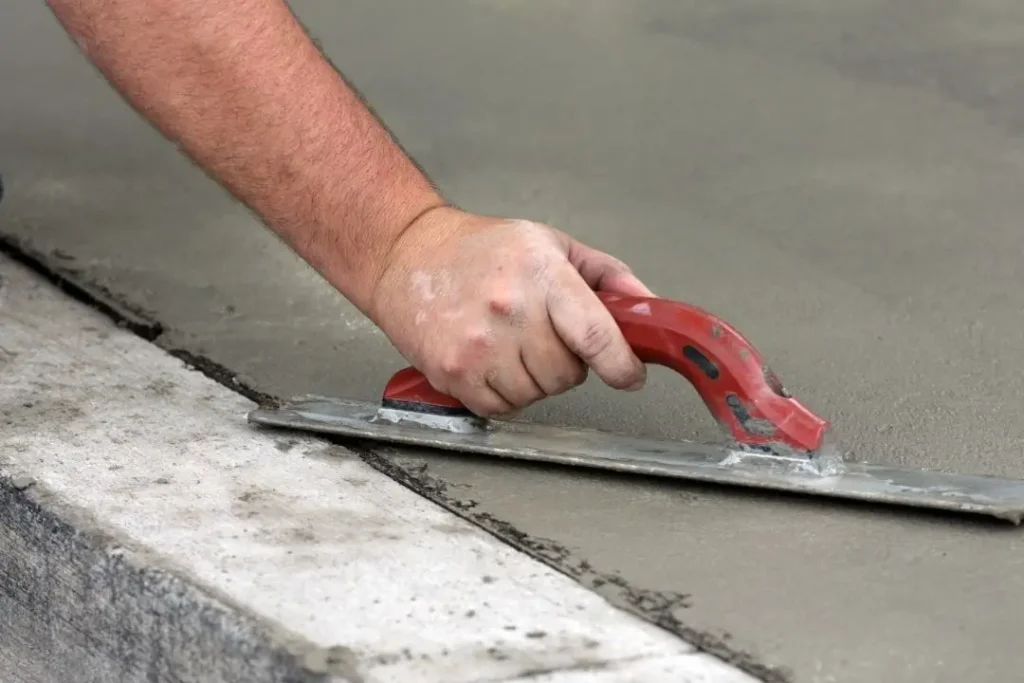
Both regular and exposed aggregate concrete have their strengths, but it really comes down to your goals, budget, and how you plan to use the space. If you’re after a simple, cost-effective surface that’s easy to clean and can be updated later, regular concrete is the practical choice. It’s versatile, quick to install, and works well in areas that will be covered or changed down the track. But if you’re looking for a decorative finish that offers texture, slip resistance, and street appeal, exposed aggregate is worth the extra investment.
If you’re not sure which one’s right for your home, get in touch with our team. We provide concrete services across Caboolture and surrounding areas. Whether you need help comparing finishes or want a free quote for your outdoor space, we’ll walk you through your options and help you achieve a quality result that suits your home. Call us today on (07) 5408 6099!


